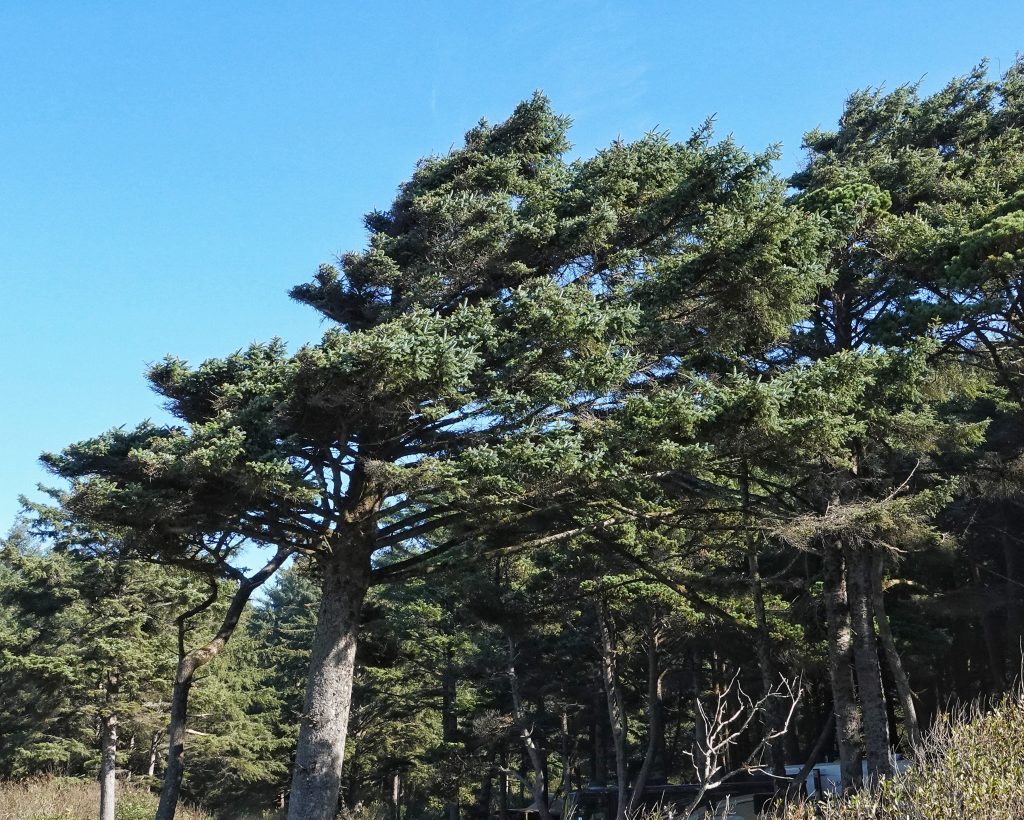
The 16th installment in my attempt to profile the conifers of the PNW highlights Picea sitchensis (Sitka spruce). This primarily coastal denizen, which is seldom found more than 50 miles from the sea, was one of the few conifers I could confidently identify before this project, but that is only because it is the only spruce (Picea spp. can always be identified by the peg-like projections left on a branch after the needles fall off) in our region that is found in low elevation, coastal habitats. In fact its unusually high salt tolerance means it’s often the only conifer found where the land meets the sea.
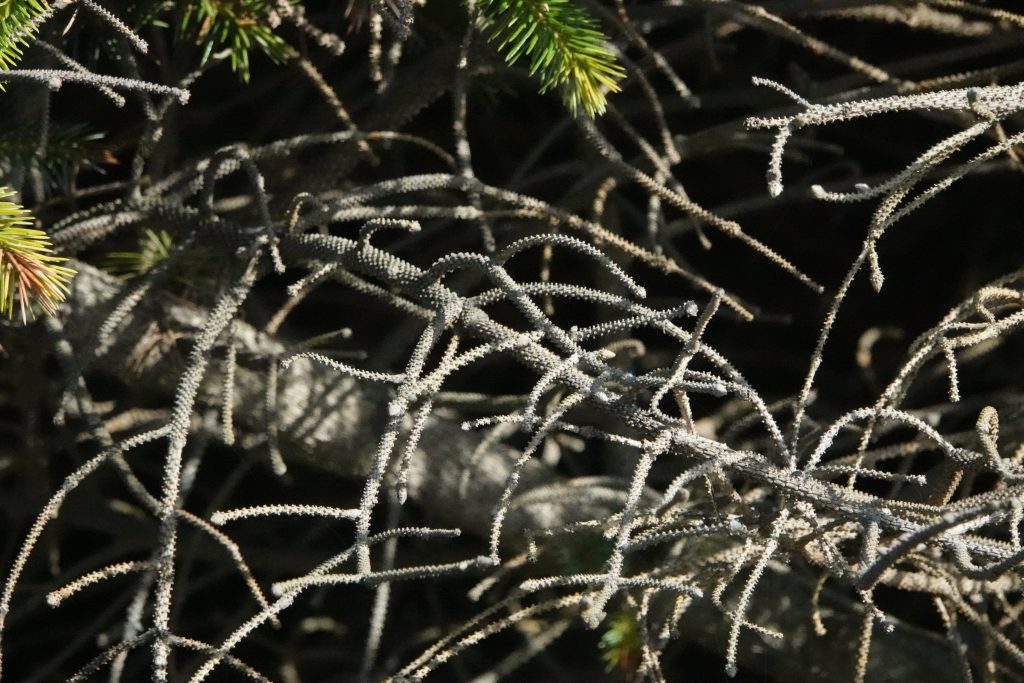
The only other spruces we have in our region are Engelmann spruce, which is an inland, montane species, and Brewer’s spruce, which are found in sw Oregon/nw California. But it is possible they could overlap in the Siskiyous (Brewer’s) and western Cascades near the Puget Sound (Engelmann), especially in the Federation Forest/Crystal Mountain area along the White River (although range maps do not show them overlapping anywhere), so it could be helpful to know that Sitka spruce have sharp needles, scalloped cone scales, and mostly horizontal branches, while Brewer’s spruce has relatively blunt needles, smooth cone scale margins, and mostly vertical, drooping branchlets, and Sitkas have triangular needles that do not roll, while Engelmann spruce have 4 sided needles that roll easily between thumb and forefinger.
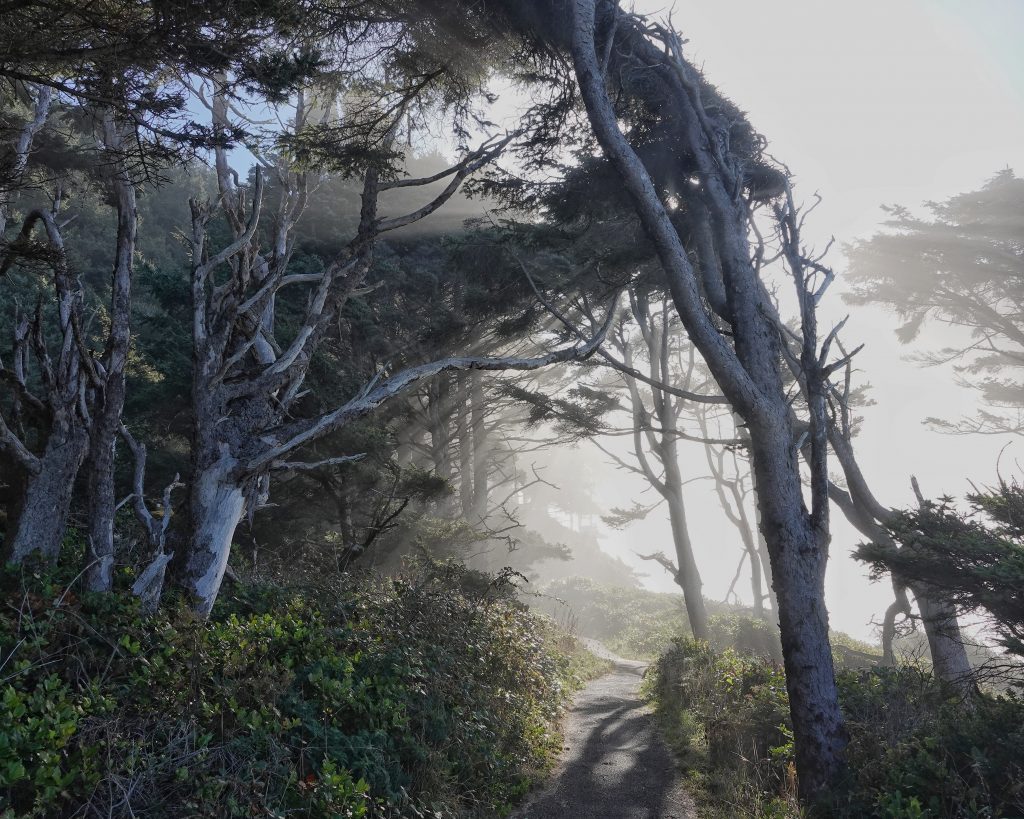
These are moderately shade tolerant trees, about midway on the scale between the very tolerant (and frequently sympatric) Western hemlock and the very intolerant Douglas-fir. The areas where Sitka spruce grow tend to be damp and humid year around, which is probably why I’m finding little information on its fire resistance and recovery. It is susceptible to windthrow, although the whole tree isn’t usually downed unless there is root damage. Instead it is much more common for the upper portion to be snapped off in high winds. Sitka spruce often live 700-800 years. For a more complete picture of their ecology see Harris (1990).

Sitka spruce (also known as tideland spruce, coast spruce, and yellow spruce), is not only one of the fastest growing trees in the world, but is also the largest species of spruce, and therefore the most commercially important one. It has a high strength to weight ratio, so besides being used as lumber and planking it has specialty uses as wood for ladders, aircraft shells, racing shells, garage doors, boat oars, sailboat masts and spars, and folding bleachers. It’s great resonant qualities endear it to makers of fine pianos, organs, and violins, and it’s long fibers make it valuable for pulp and paper products.
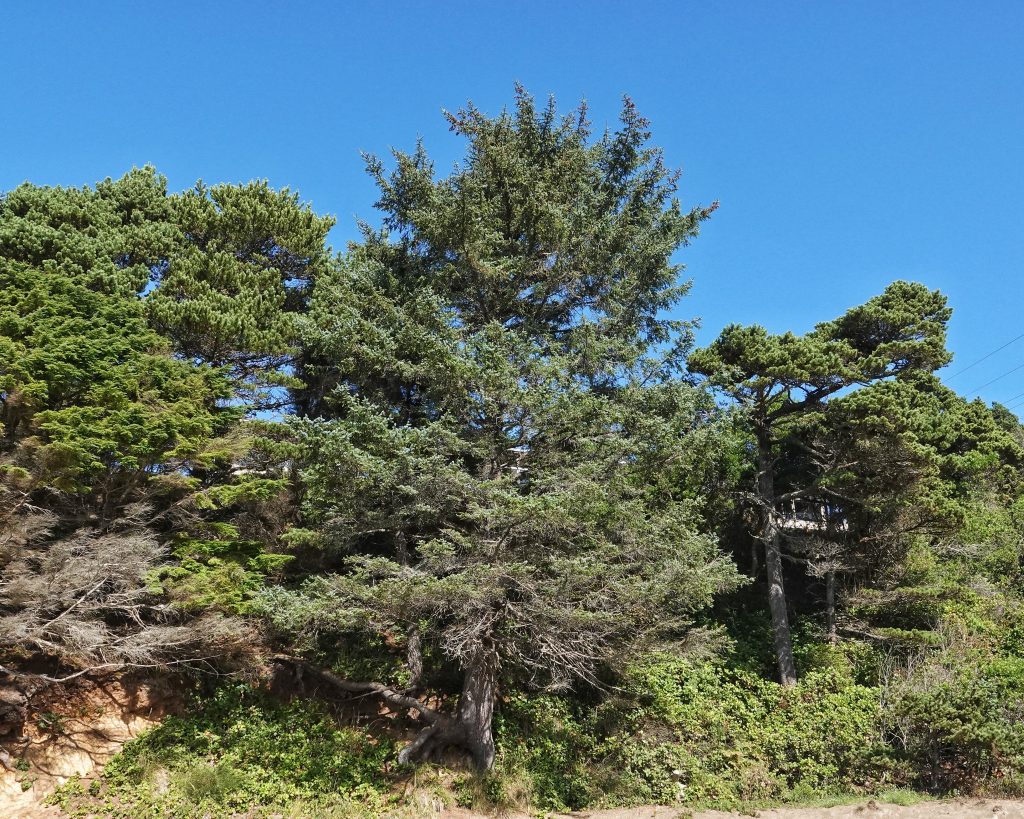
There do not seem to have been many food uses for this species, though the Makah ate first year cones, buds, and young shoots, and, as with so many conifers, the pitch was chewed as gum and candy, and the cambium was sometimes dried and eaten. But indigenous peoples did have a plethora of medicinal uses for Sitka spruce, many of which involved the purported analgesic properties of the pitch, bark, and cones, especially for relief of rheumatism, as well as using the pitch to treat cuts, sores, and gonorrhea, a decoction of new shoots and bark for gastrointestinal ailments, and cambium to treat coughs, colds, and constipation. The lumber and branches were used for construction, roots were woven into baskets, and hard, sharpened knots were used as weapons. Boughs were used ceremonially to protect against illness and death, and at a girls puberty potlatch to ‘sweep away’ bad influences. For a more complete picture see the 136 entries on the Native American Ethnobotany Database.
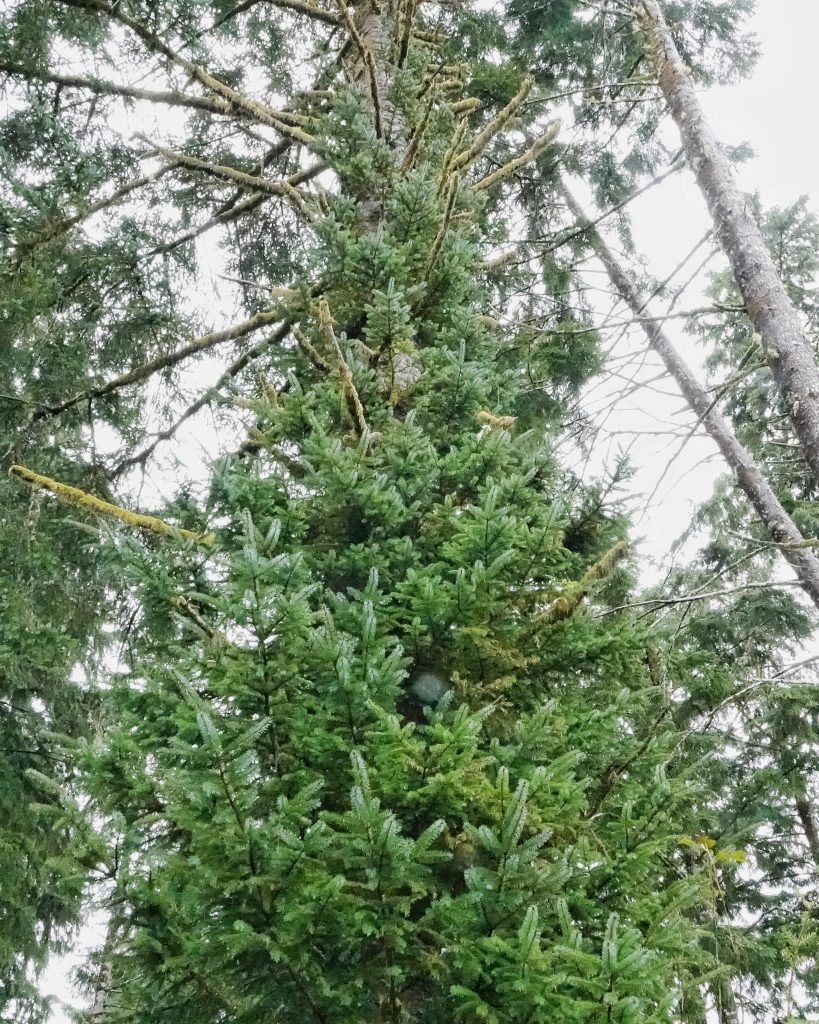
Sitka spruce are just very cool trees! I love the gnarled, shrubby, patches of them that one finds along the immediate coast, those dense and nearly impenetrable thickets along rocky headlands, and the massive sentinels further inland. They are quite wide for their height, unless growing alone in full sunlight, and unlike most conifers they have epicormic branches, which are produced by buds beneath the bark that are dormant unless there is damage to the upper part of the tree, or a sudden, prolonged increase of light to the lower sections.

Description-May be very large tree (sheltered old growth away from the immediate coast may be over 200’ tall and 10’ dbh) or shrubby (especially in areas of high wind and along the immediate coast); 10-30mm long needles are arranged all the way around the branch on peg like projections that are persistent, and are sharp, stiff, flattened to triangular, with stomatal bloom on all three sides; bark is grey to purplish brown with scaly plates; branches are horizontal to somewhat drooping; cones are at the end of the branches, and have scalloped margins on the cone scales.
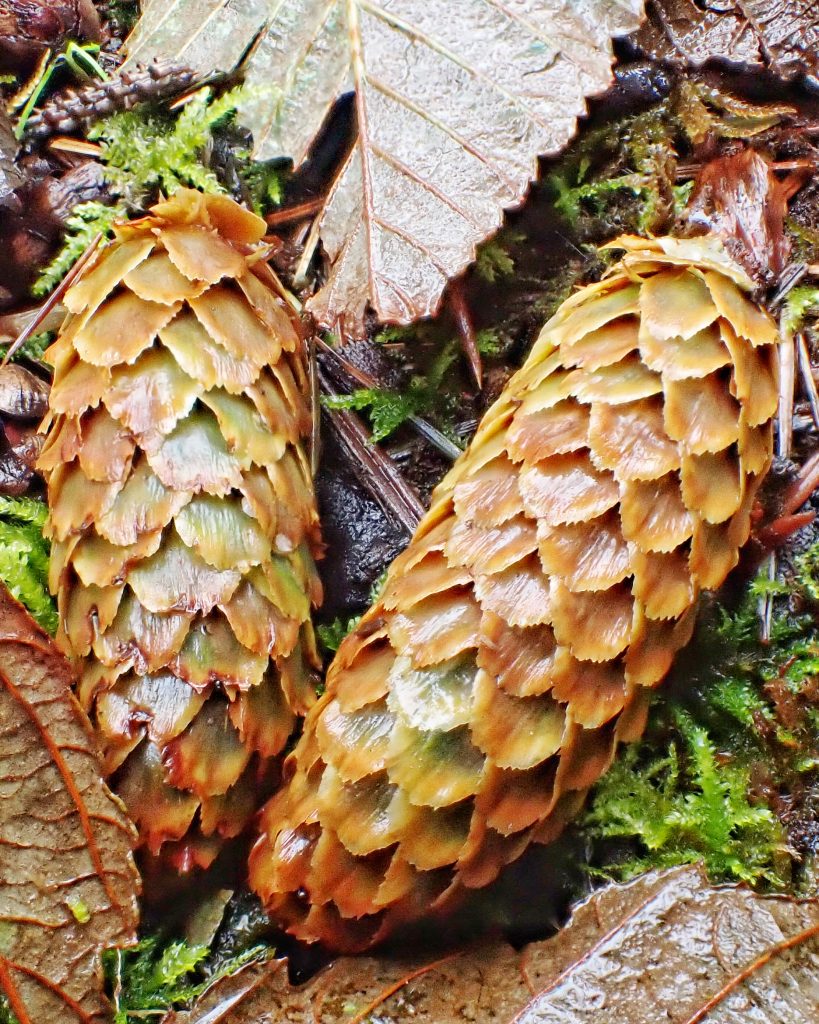
Similar species–Engelmann spruce have 4 sided needles that roll easily, Brewer’s spruce has stiff cones with smooth apex to the scales, needle bearing branchlets hang straight down, and it is only found in sw Oregon/nw California; true firs have erect cones, lack peg-like projections after needles are shed; Doug-fir have relatively soft, blunt needles, insignificant bases left behind after needles are shed, and trident shaped bracts extending beyond the cone scales.
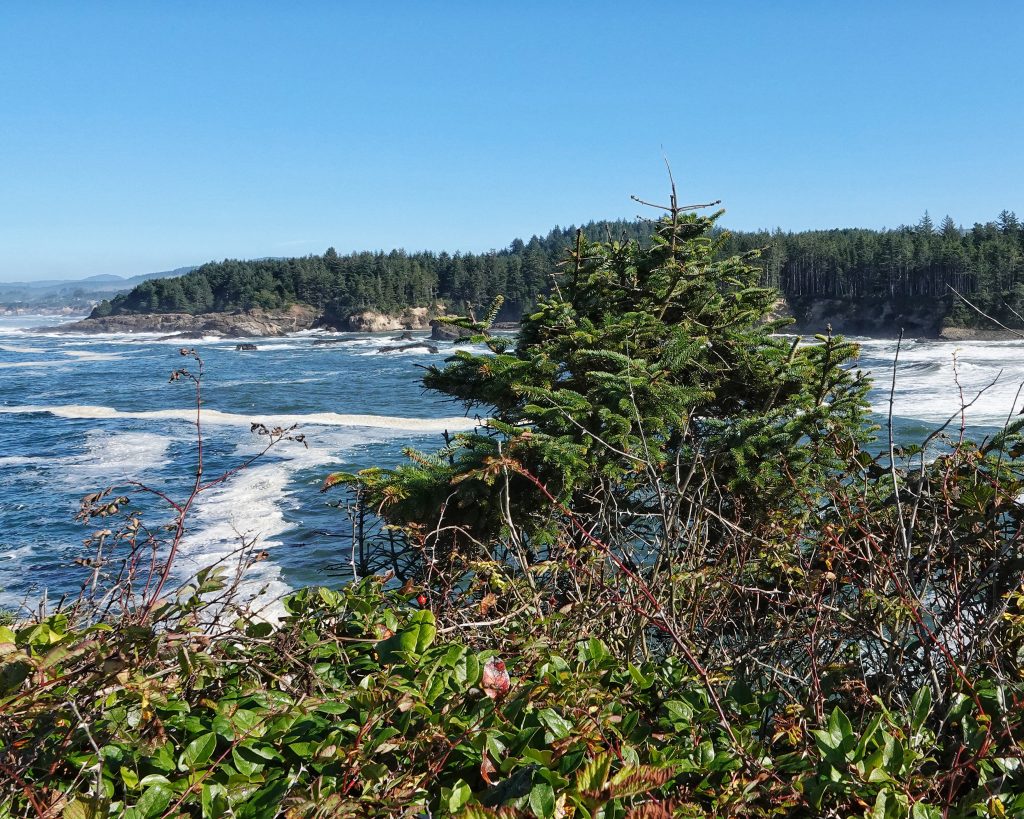
Habitat-Coastal forests, usually within 50 miles of the ocean.
Range-Norton Sound in Alaska, to Mendocino County, California.
Reproductive timing– Male and female cones begin growing in the spring of one year, but pollination doesn’t occur until the following spring, usually April-June; seeds ripen by late summer and are released in early to mid autumn; isolated trees may reproduce in less than 20 years, but trees in stands are usually 20-40 years old before they reproduce.
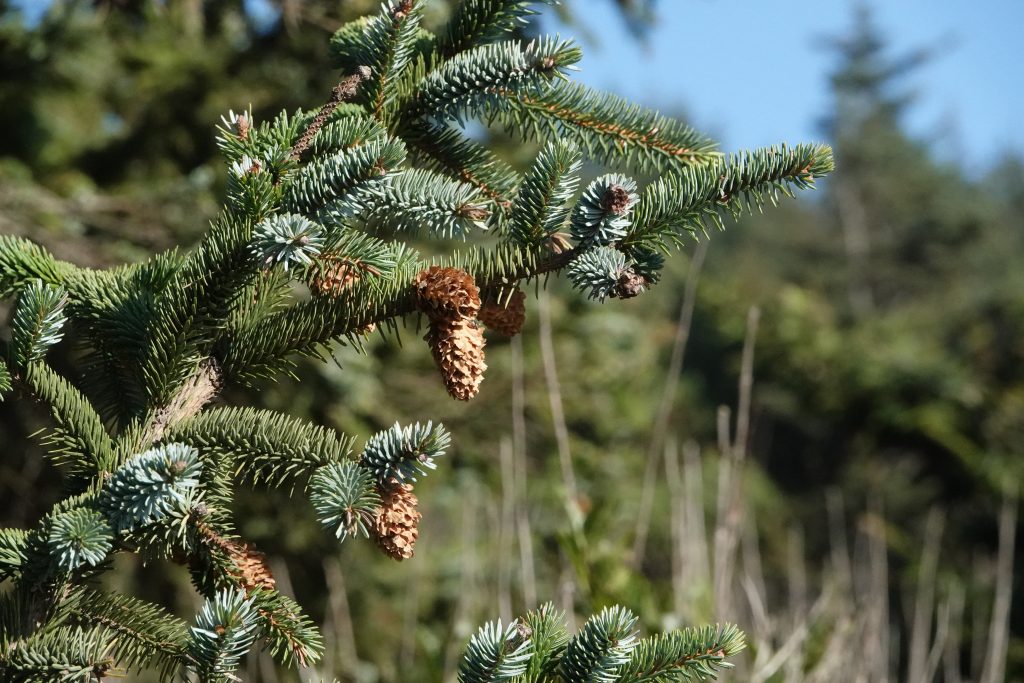
Eaten by-Larval host for the pine white butterfly, and for the moths Lophocampa argentata, Caripeta divisata, Ectropis crepuscularia, Enypia packardata, E. venata, Epirrita autumnata, E. pulchraria, Eupithecia annulata, E. longipalpata, E. mutata, E. olivacea, Gabriola dyari, Hydriomena californiata, H. irata, H. marinata,H. renunciata, H. speciosata, Lambdina fiscellaria, Melanolophia imitata, Neoalcis californiaria, Nepytia phantasmaria, N. umbrosaria, Pero behrensaria, P. morrisonaria, Sabulodes edwardsata,Stenoporpia pulmonaria, Tetracis pallulata, Thallophaga hyperborea, Malacosoma disstria, Orgyia antiqua, Agrochola pulchella, Aseptis binotata, Phlogophora periculosa, Melanchra picta, Spiramater lutra, Xestia mustelina, Dioryctria abietivorella, Promylea lunigerella, Synanthedon novaroensis, S. sequoiae, Acleris gloveranus, Barbara colfaxiana, Choristoneura fumiferana, Cochylis dormitoria, Epinotia hopkinsana, E. radicana, Taniva albolineana, Zeiraphera canadensis, and Z. pacifica; larvae and adults of the weevil Steremnius carinatus, and the bark beetle Dendroctonus rufipennis, feed on this species, and it is a larval host of the weevil Pissodes strobi; susceptible to the introduced aphid Elatobium abietinum and the fungi Heterobasidion annosum and Armillaria mellea; mammals such as elk, bear, deer, porcupines, rabbits, hares, and squirrels eat the shoots, and nuthatches, grosbeaks, finches, chickadees, siskins, goldfinches, crossbills, and sparrows all eat the seeds; grouse eat the needles; the longhorn beetles Xestoleptura behrensii, Ulochaetes leoninus, Semanotus litigiosus, Rhagium inquisitor, Phymatodes fulgidus, Opsimus quadrilineatus, and Judolia montivagans utilize dead and dying trees as larval hosts.
Etymology of names–Picea is from the Latin word for pitch, and was applied to several conifers. The specific epithet sitchensis refers to the type location for this species, Sitka, Alaska.
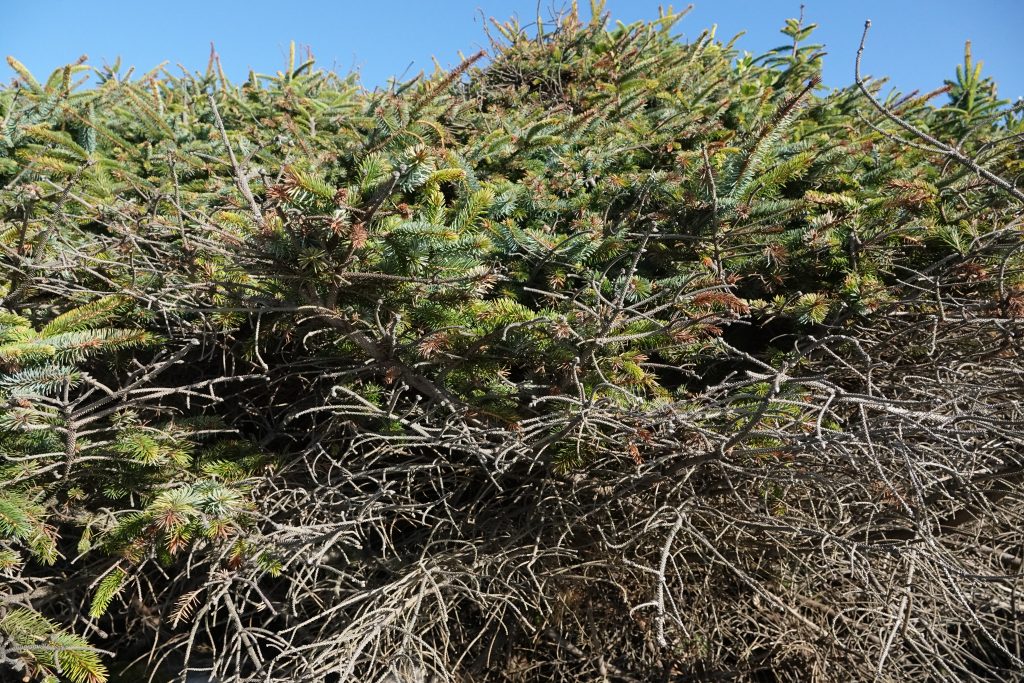
https://catalog.extension.oregonstate.edu/sites/catalog/files/project/pdf/em9105.pdf
Picea sitchensis (Sitka spruce) description
https://www.treegirl.org/sitka-spruce.html
BRIT – Native American Ethnobotany Database
http://nativeplantspnw.com/sitka-spruce-picea-sitchensis/
https://conifersociety.org/conifers/picea-sitchensis/
Picea engelmannii (Engelmann Spruce) – 10,000 Things of the Pacific
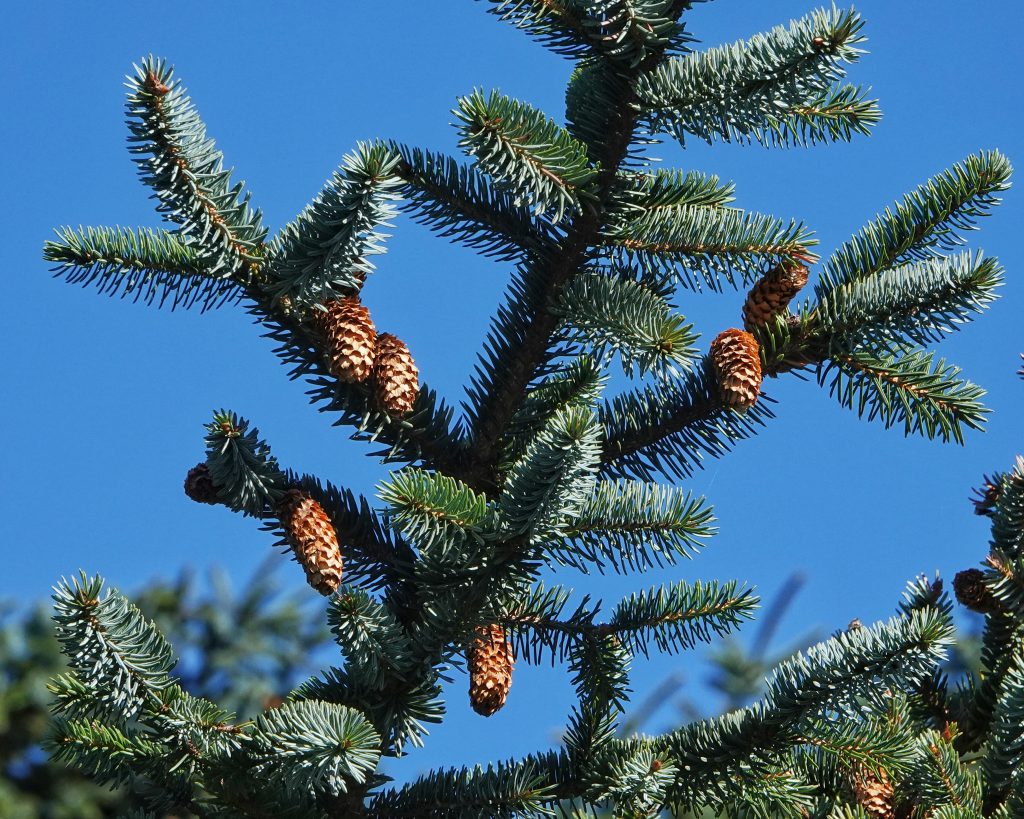
Don’t forget the Spruce Goose aviation museum in McMinnville. Also wondering if you ran across any populations of vertebrates that live their lives in the canopies of these old growth giants.
Thanks for mentioning that!
In addition to various birds, squirrels, and chipmunks that may live there, red tree voles and Humboldt’s flying squirrels are known to frequent this species.
A nice overview of the Sitka spruce forest habitat can be found here-http://faculty.washington.edu/wgold/BIS%20358/358%20example1.doc
Not sure why that didn’t become a link, but you can copy and paste it into your browser
Sitka spruce are why Boeing is based in Seattle. During WWI when planes were still made of wood, spruce was the best choice as it was lightweight but flexible and strong. The reason we have almost no old-growth Sitka spruce trees left in the PNW is because Boeing sent people into the coastal forests to find every grove that the loggers hadn’t already taken down. There are a few left at Teal Slough, part of Willapa NWR. They’re mixed in with the ancient western red cedars that tend to get more attention, but the spruce are equally impressive.
Thanks for sharing that, Rebecca!